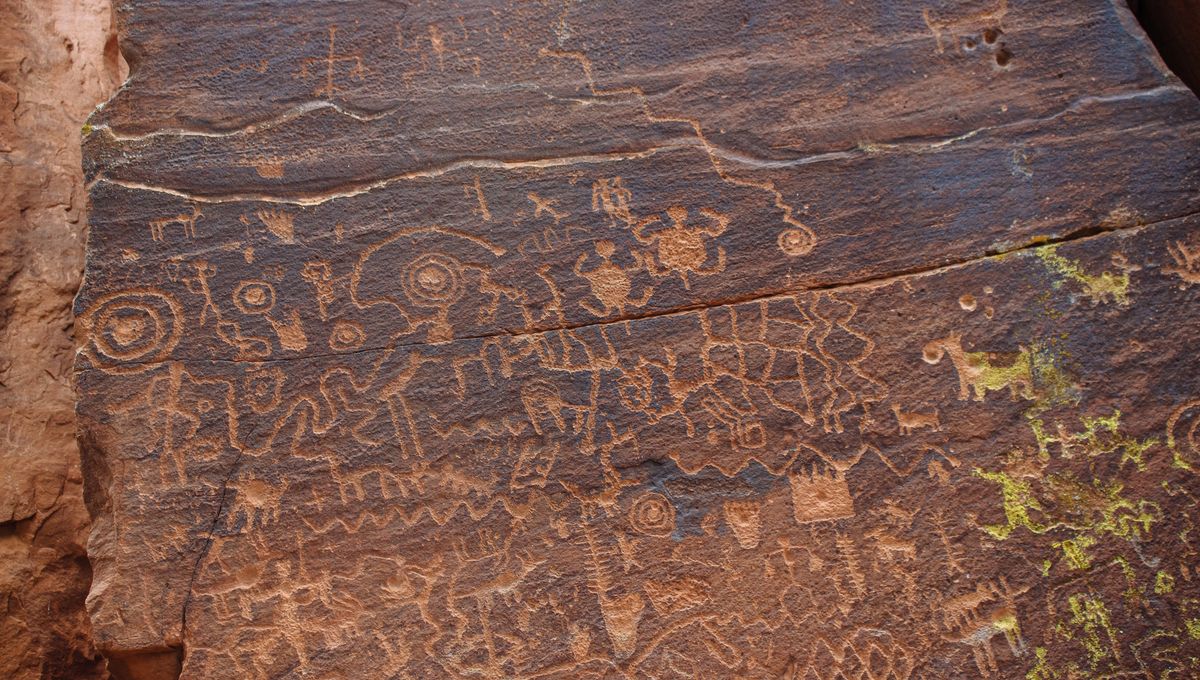
Of all the remarkable places to view the summer solstice, the point in the year when the Earth’s axis is tilted at its closest point from the sun, few can compare to the sunny spectacle that unfolds at the Native American rock art of Arizona’s Verde Valley.
The Verde Valley is home to a sprawling display of 900-year-old rock art. Among the 1,000 red sandstone etchings and carvings, you can pick out vivid expressions of frenzied people, rich wildlife, and squiggling lines.
It was only relatively recently that locals noticed a curious feature on the largest and best-preserved petroglyph site in the valley, the V-Bar-V Heritage Site.
On the summer solstice, around June 21, the shadows cast by the two rocks fall down on a petroglyph below, perfectly framing the carvings of a corn plant and a dancing figure with the Sun’s beam.
The fact this precise light show only occurs around the year’s longest day is no coincidence. As first reported by Arizona Daily Sun in 2016, it’s believed this portion of rock art served as a calendar to mark the passing of the seasons, the start of spiritual ceremonies, and the time to start planning next season’s harvests.
To find out more about this Sun calendar, local archaeologist Kenneth Zoll spoke to the Hopi, one of the Native American tribes who descended from the Sinagua people who created the art. As reported by BBC Earth, they explained to him that stones are purposely used to cast shadows, whereby it appears the beams of sunlight shine down on certain images. This happens at specific points throughout the year, with each shadow and ray of Sun framing a seasonal image of cultural, social, or spiritual significance to them.
“They were there with dark skies and they had a lot of time during the day to observe how the sunlight moves across their realm. They were fully living in their environment,” David Purcell, a supervisory archaeologist at the Museum of Northern Arizona, told Arizona Daily Sun in 2016. “This is a good expression of how close they are to this environment in this time period.”
The 1,000 petroglyphs were carved into the rock around 900 years ago by the Southern Sinagua people, a pre-Columbian culture that lived in the baking lands of central Arizona between approximately 500 CE and 1425 CE. On top of their distinctive carvings, they left behind a huge legacy in linguistics and folklore, as well as physical archaeological traces, such as cliff dwellings and pit houses.
Chances are, there are a lot more of these Sun calendars out there in the depths of central Arizona; however, the only real way to find them is by being in the right place at the right time. It seems likely that this discovery will only add to the interest that surrounds these fascinating works of ancient art.
An earlier version of this article was published in May 2018.
Source Link: Each Summer Solstice, This Native American Rock Art Reveals A Secret Feature